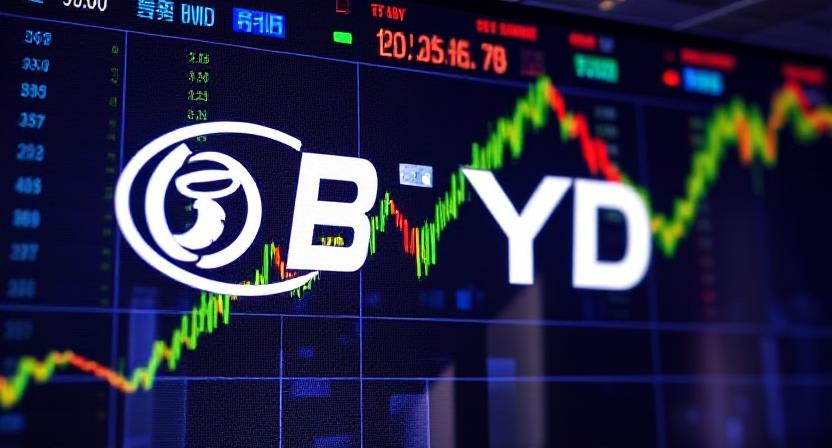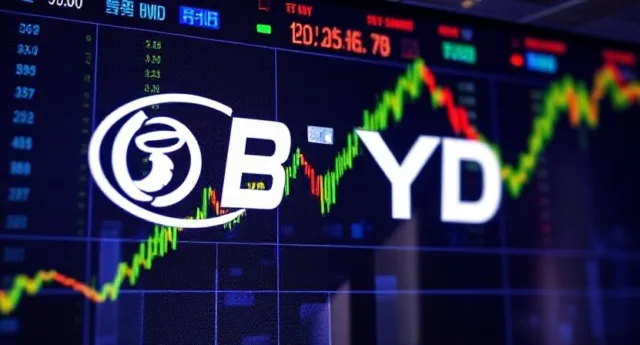
Introduction: The Rise of BYD as a Global EV Titan
BYD (Build Your Dreams) has rapidly evolved from a battery manufacturer into one of the world’s most influential electric vehicle (EV) producers. Once overshadowed by global giants, the company now challenges Tesla’s dominance through innovation, efficiency, and affordability. As the global race toward electrification intensifies, investors are asking a key question where will BYD’s stock stand by 2030?
With the EV sector reshaping modern transportation, BYD’s position at the intersection of sustainability and technology makes it a long-term player to watch. Let’s examine the company’s current financial health, growth drivers, and the potential valuation scenarios that could define its future trajectory.
BYD’s Financial Strength and Recent Performance
BYD’s recent financial results illustrate remarkable resilience and scalability. The company reported over $100 billion in revenue for 2024, marking an impressive year-over-year increase of around 25%. Net profit also climbed above $5 billion, supported by strong EV demand in both domestic and overseas markets.
Its aggressive push into global territories including Europe, Japan, and Southeast Asia continues to fuel investor confidence. The company has also expanded its production footprint with new facilities in Thailand and Brazil, signaling a serious effort to diversify beyond China.
In the broader market, BYD’s share performance has mirrored global economic sentiment. While short-term volatility persists, long-term investors view the company’s fundamentals as strong, particularly given its vertical integration strategy that reduces supply-chain risks and boosts cost efficiency.
Global Stock Market Context and Investor Behavior
Stock markets in late 2025 are experiencing a delicate balance between optimism and caution. U.S. indices like the S&P 500 and NASDAQ are showing modest gains, while Asian markets have been fluctuating amid changing interest rates and inflation concerns.
In this climate, companies rooted in sustainability and innovation — such as BYD are seen as safer long-term bets. Financial updates suggest that BYD’s stock has performed better than most EV peers, as it maintains profitability even during periods of declining subsidies and intense price competition.
The Hong Kong-listed BYD (1211.HK) has shown relative stability, reflecting investor confidence in its consistent earnings growth and expanding global influence.
Key Drivers for BYD’s 2030 Growth
Technological Edge in Battery Innovation:
BYD’s proprietary “Blade Battery” remains one of its strongest competitive advantages. Its superior safety, low cost, and long life make BYD a key supplier for its own vehicles and potentially for other automakers.
Global Expansion Strategy:
The company’s focus on scaling operations overseas could help achieve its goal of having half of all sales come from outside China by 2030. Entry into Europe and the Middle East signals strong ambition for international leadership.
Sustainability and Policy Support:
Global governments are offering incentives for EV adoption and carbon neutrality goals. BYD stands to benefit from these long-term policy trends, particularly in markets pushing for full electrification by 2035.
Diversification Beyond Cars:
BYD’s portfolio extends to electric buses, energy storage systems, and rail transport providing steady revenue streams and resilience against sector downturns.
Risks That Could Limit Future Gains
Even as BYD scales, certain risks could weigh on its future valuation:
Competitive Pressure: Companies like Tesla, Rivian, and emerging Chinese EV firms (NIO, XPeng, Li Auto) are intensifying global competition.
Macroeconomic Uncertainty: Rising borrowing costs and fluctuating commodity prices may squeeze margins.
Regulatory Barriers: Tariffs and local manufacturing rules in Western markets could complicate expansion efforts.
Investor Fatigue: The EV sector’s rapid growth has raised valuation concerns, leading to profit-taking and market corrections
BYD Stock Price Prediction for 2030
Given BYD’s current fundamentals, expansion plans, and overall EV market growth trajectory, three primary outlooks can be projected for 2030:
1. Base Case (Balanced Growth)
If BYD continues its 15–20% annual growth rate and maintains solid margins, analysts estimate a stock price range between $150 and $200 by 2030.
2. Bullish Case (Aggressive Expansion and High Margins)
Assuming BYD dominates global EV supply, improves profitability, and captures significant international market share, its stock could soar to $250–300 per share.
3. Bearish Case (Competitive and Regulatory Pressure)
If competition intensifies and market demand slows, BYD could see its valuation fall back to $100–130 per share.
These projections depend on factors like earnings performance, market sentiment, and macroeconomic conditions leading up to 2030.
Stock Insights and Financial Outlook
Recent financial insights from Bloomberg indicate that BYD’s forward-looking P/E ratio remains below that of Tesla, signaling room for valuation expansion if profits grow as expected. Analysts highlight BYD’s strong cash flow and minimal debt levels as major advantages in funding global growth initiatives.
The company’s consistent revenue and net income growth set it apart from many peers still struggling to achieve profitability. With energy storage, EV batteries, and global logistics emerging as new profit centers, BYD is positioned to sustain double-digit growth through the next decade.
Stock market watchers also point out that BYD’s stability contrasts sharply with volatile tech-driven EV startups. Its diversified portfolio and established supply chain make it a rare blend of innovation and operational maturity a combination that long-term investors find appealing.
Conclusion: Building a Sustainable Future
BYD’s vision for 2030 is anchored in global sustainability, innovation, and expansion. As the company continues to redefine mobility and energy, its role in shaping the future of the EV industry appears stronger than ever.
While no forecast is without uncertainty, BYD’s combination of technological leadership, solid financials, and international ambition gives it a promising outlook. Whether the stock ends up at $150 or $300 by 2030, BYD represents more than an investment opportunity it stands as a testament to how innovation and sustainability can drive long-term value in the stock market.









